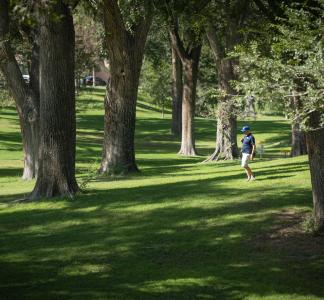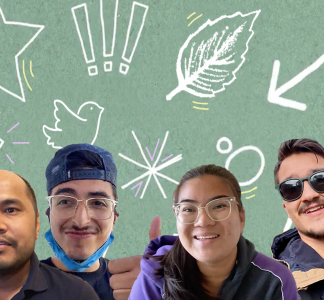What will it take to make sure everyone can access city parks?

King County, Washington
Mason Cummings
Seattle effort details outdoor equity needs, solutions
Access to nature and the ability to safely spend time outdoors is critical to our health and well-being. Yet, many communities across the country – particularly low-income communities and communities of color – continue to face barriers to getting outside. In King County, Washington, 850,000 residents lack access to nearby parks and open space. And while 88 percent of Seattle residents have access to a park within a half-mile of home, less than half of the rest of King County residents do.
To better understand these disparities, The Wilderness Society, King County Parks and the Environmental Coalition of South Seattle (ECOSS) partnered with local organizations and community members to assess community needs, priorities and recommendations around increasing equitable access to transit and parks across King County. The project consisted of six community-led roundtables; an online survey that received nearly 400 responses; and the input of 11 community-based organizations serving Black, Latinx, Asian, Muslim, youth, disabled, immigrant and refugee populations.

King County, Washington
Mason Cummings
The resulting assessment identified real day-to-day challenges that community members face in reaching parks and green spaces, and surfaced solutions based on the needs of residents. Below is a sample of recommendations and takeaways from the assessment. You may also view the the full report here or download this fact sheet.
Key Takeaways:
-
People value parks and want them to be safe and welcoming for their communities.
Parks are important community spaces and we should work to make them as easy to enjoy as possible.
-
Riding transit can be difficult in general, and especially to parks.
Participants talked about bus stops being too far away, having to transfer too many times and safety concerns as reasons why they don’t ride.
-
Safety in parks and on transit can be a deciding factor for using them, but community voices must be considered when deciding what best delivers a safer atmosphere.
Certain populations may experience societal factors that make them feel unsafe and discourage them from getting on transit or making it to a park in the first place.
-
Community members want more opportunities to engage with decision-makers to make sure their needs are met.
Community members expressed that they already have creative ideas for solutions to issues regarding equitable access to parks, but don't have sufficient access to decision makers or the ability to collaborate on strategy and planning of new programs.
-
Our unique struggles, experiences and identities affect how we interact with and use parks.
Making these spaces inclusive will take more than a one-size-fits-all approach.
-
Community members appreciated being compensated for their time, thoughts and expertise.
Incentivized participation encouraged more in-depth conversation and involvement.
Community partners told us:
- “Host group tours at parks and help people get familiarized with bus routes and the parks. This is especially when exploring areas further away from home.”
- "More land acquisition for local parks and trails within environmental justice communities, so we don’t have to travel so far."
- “Provide direct routes from major transit hubs to popular park destinations - like Trailhead Direct but to city parks.”
- “Trained park guides stationed in parks to lead activities, answer questions and help folks engage with the space in a way that feels right to them. It’s critical that these folks are from the community and rooted in justice and equity to support a wide variety of culturally relevant park uses.”
- “Listen to the community, show up in community spaces, set up structures to build trust and accountability.”
- “Take pictures, take videos. That’s important because you don’t know what you’re walking into or what to expect. Even just showing what the trailhead and transportation looks like. It can be intimidating; it feels risky going out on an adventure not knowing what to expect. Have more education and visuals on what to expect. How long is the ride? Is there A/C? Things like this would make it more comfortable.”



